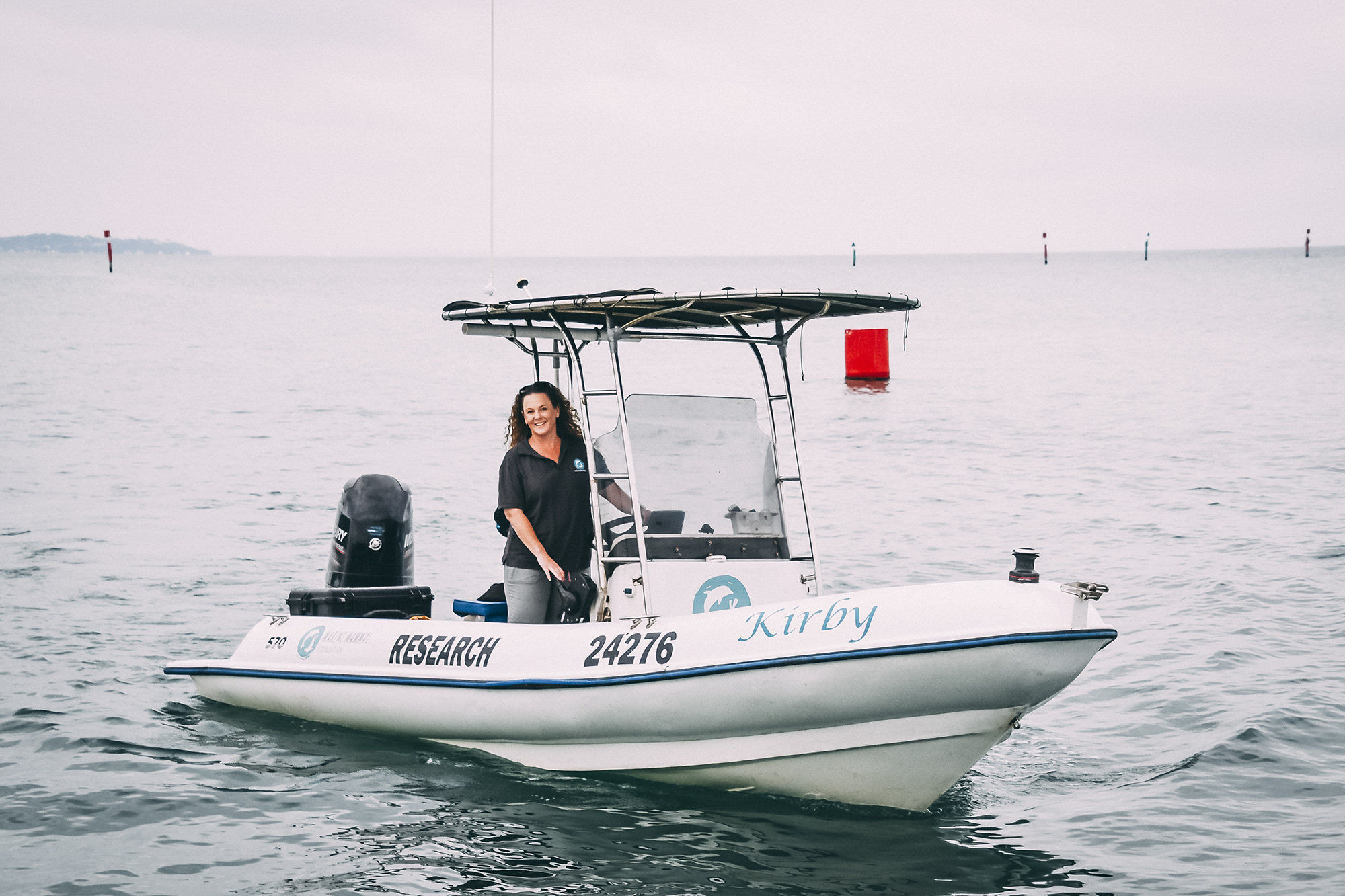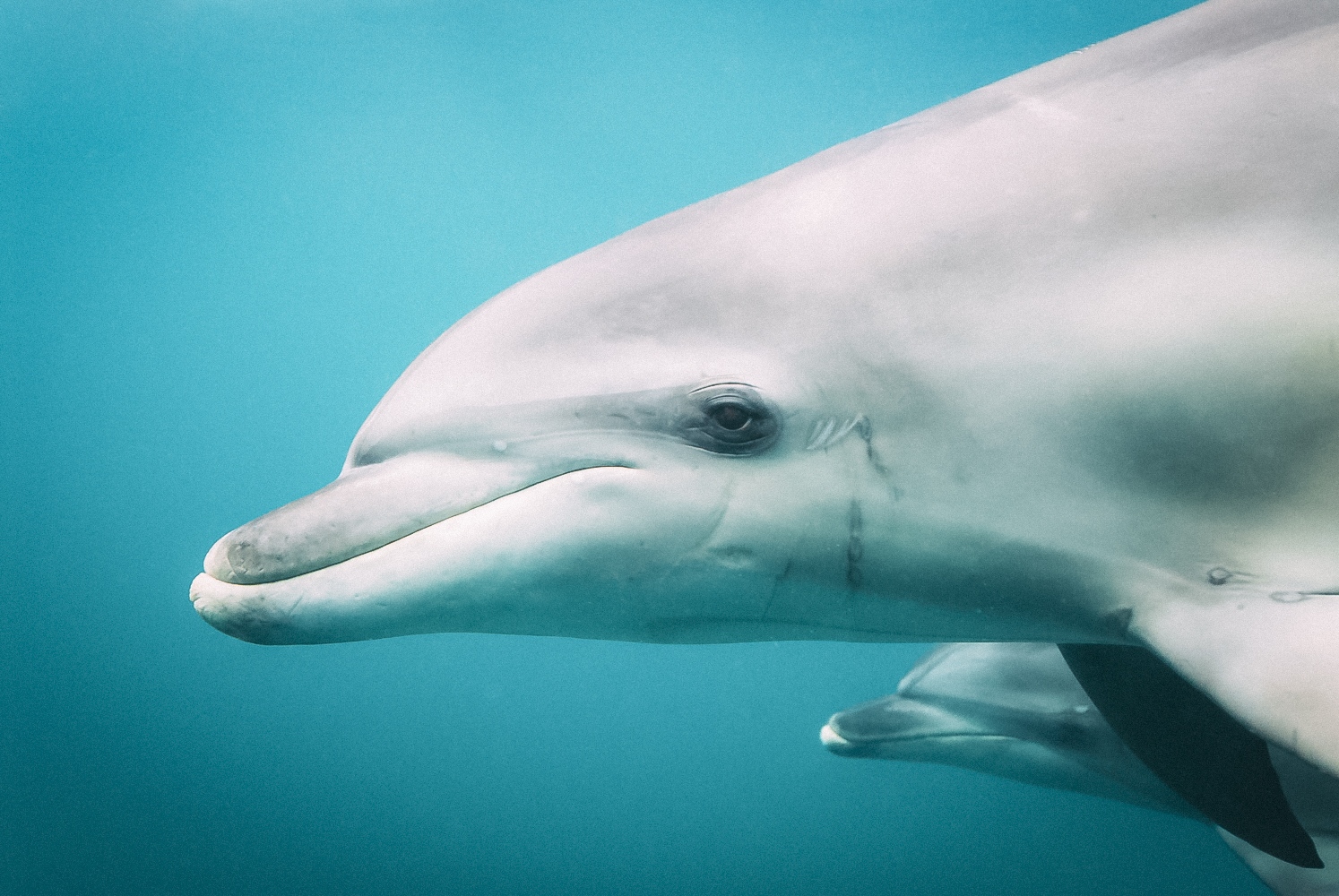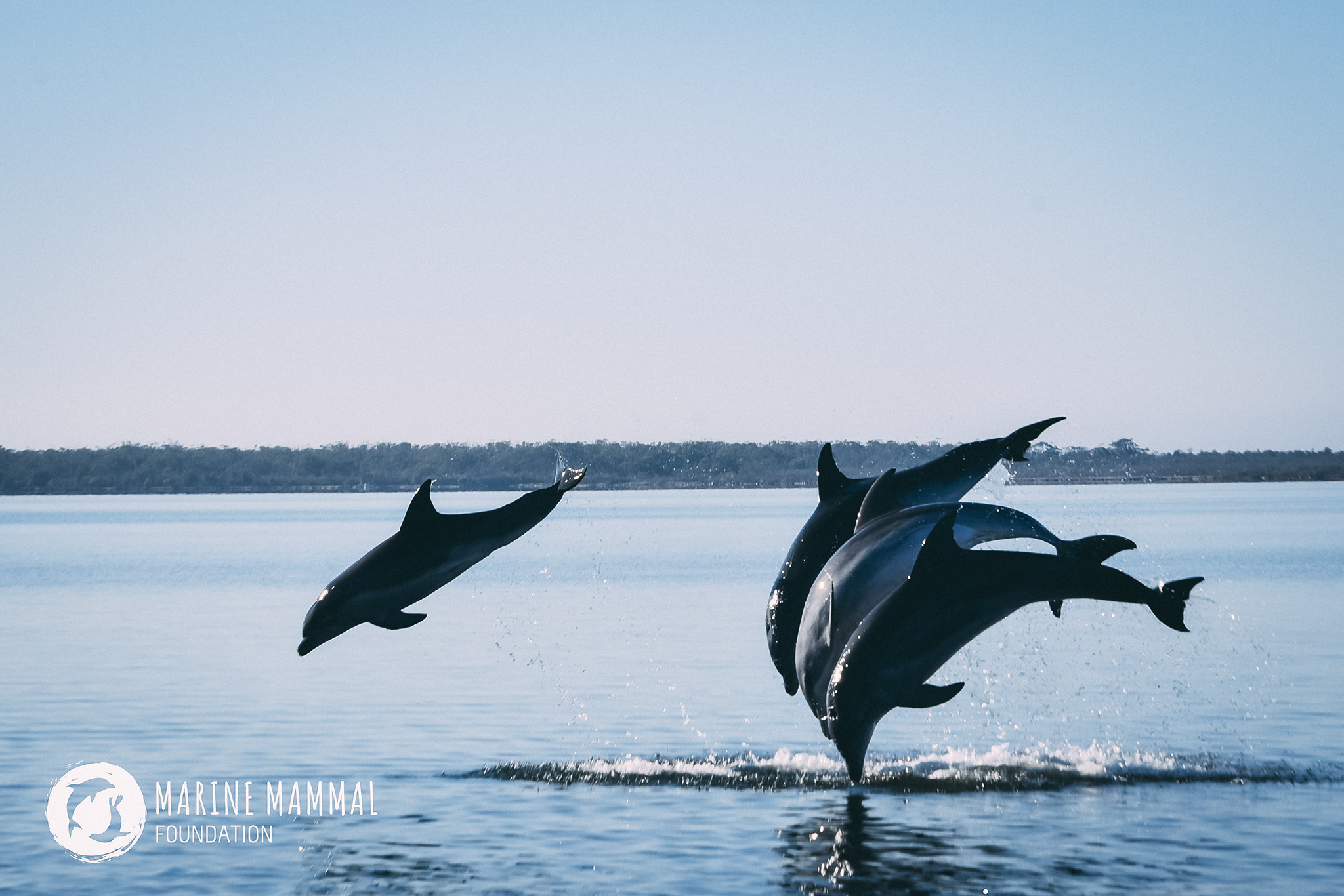The Burrunan dolphin is a species of Bottlenose dolphin found in Victoria, Australia. © Jess Beckham
Interview by Rory Francis
The world’s oceans cover 71% of the earth’s surface, yet they remain mostly undiscovered. Australian zoologist and geneticist Dr. Kate Robb has been researching dolphins across southern Australian oceans for 16 years, and in 2011 discovered a new dolphin species, the Burrunan dolphin right on her doorstep in the Gippsland Lakes.
Kate is the founding Director of the Marine Mammal Foundation, an organisation working to protect key species and marine environments of the Gippsland Lakes and surrounding. WildArk caught up with Kate to find out more about her research and the work of the Marine Mammal Foundation.

Dr Kate Robb spends her time researching marine mammals in both the Gippsland Lakes and Port Phillip Bay. © Marine Mammal Foundation
Where did your passion for protecting the marine environment come from, and what drew you to the Gippsland Lakes and Port Phillip Bay area?
My passion began when I first started to dive out in Port Phillip Bay. I didn’t want to just go for a dive and say, ‘oh, that’s a cool fish,’ I wanted to learn more about the environment, how the animals were interacting and how I could protect it. I did a Bachelor of Science degree which addressed my passion and thirst for knowledge for all things ‘marine’. During my Honours research, I began investigating the dolphins found in the Gippsland Lakes. Whilst I could physically see morphological variations between the different species, the dolphin’s DNA was the first strong indication that perhaps they were their own unique and separate species, which in fact, as we now know, turned out to be true.
As the Burrunan dolphin is an apex predator and therefore, a great indicator of ecosystem health, how important is it that these dolphins remain in the Gippsland Lakes?
It is essential for several reasons. The Gippsland Lakes is home to one of only two known resident dolphin populations of this new species in Victoria. The other population is in Port Phillip Bay. Both populations are incredibly small and isolated, with only approximately 65 resident Burrunan in Gippsland Lakes and 120 in Port Phillip Bay. It is crucial to conserve the species and maintain the health of the habitat in which they live. Burrunan dolphins are a top-order predator in the Gippsland Lakes, which means that changes to ecosystem function, like fish stocks or water quality, can have huge impacts. We refer to it as the ‘top-down, bottom-up effect,’ which means that changes that affect other species further down the trophic levels have an impact throughout. The Burrunan dolphin is also an excellent indicator of the health of the habitat, as there has to be healthy fish nurseries, unpolluted water, and limited disturbance in the environment for the population to remain stable and/or hopefully increase.
Please describe the unique qualities of the Burrunan dolphin species and how did you make the discovery of this new species?
The dolphins in Port Phillip Bay and Gippsland Lakes are a bit of a mish-mash between the two previously recognised species of bottlenose dolphin. They have some characteristics of one and other characteristics of the other, but then they also have features not found in either of those two species. I didn’t start out by trying to find a new species; I was trying to figure out which species of the two were represented. The DNA was key to the discovery. When I had a look at their genetic sequences, they were entirely different, in fact they did not match with any other species across the globe. So that set me off on a track of saying, well if it’s not the common bottlenose dolphin or the Indo-Pacific bottlenose dolphin genetically, what is it? I then assessed skulls of ‘bottlenose’ dolphins across Australia collecting 40+ qualitative and quantitative measures, and then the external morphology, things like their total body size, different and numerous body measure, tooth count etc. When I collated and analysed all this data, we had multiple lines of evidence to support the formal description and recognition of a new dolphin species.
It’s so interesting that this discovery of such a large apex predator was only recently found out, it makes you wonder what other species are out there?
Absolutely, there’s so much of the marine environment that we are yet to explore. We know more about the interplanetary systems and the moon than we do about the bottom surface of our deepest oceans. It is exciting that you can still be discovering new species, especially in a world where we hear about the loss of so many species. It was crucial to establish the Marine Mammal Foundation, where our research purpose is for greater conservation, management, and mitigation outcomes. We want to protect these key species and everything that falls under them.

The Burrunan dolphin is a bit of a Mish-mash between the two previously recognised species of Bottlenose dolphin. © Jess Beckham
The Marine Mammal Foundation recently supported new international studies on how to protect dolphin and seal populations better, could you tell us more about this?
We have been collaborating with RMIT, here Melbourne, and CETEMARES in Portugal to learn new lab techniques to explore marine mammal health, technologies that we don’t currently have in Australia. Our Phd student Chantel Foord went to Portugal, to look at gene expression within areas that are known to be impacted by toxicants, learning new processes and bringing new technology back to Australia, to be used to assess ‘real-time’ health of the Burrunan dolphin. It is important we understand the threatening processes impacting on marine mammals, in particular those processes such as toxicants, we are solely responsible for putting into their environment..
How do you think new information can be adapted into on the ground strategies?
We need to have a baseline understanding of the species status, the population size, whether it is stable, increasing or decreasing, but also a better understanding of the threatening processes and using these scientific tools to address those. For example, to see whether toxicants have an impact on the dolphins and the marine ecosystem or if vessels are changing core biological activity of the dolphins, such as feeding or resting. To see how the marine soundscape is affected by the increasing noise underwater and how it impacts the dolphins. Having a better understanding of the aspects allows us to make informed management decisions and policies.
What is the government ‘s level of involvement with the Marine Mammal Foundation.
Like many other not-for-profit organisations, we rely heavily on grants, most of those are government sourced. Where the outcomes of those grants are to inform management and policy-making, we work very closely with government organisations from on-the-ground work, all the way through to informing regulation. We had heavy involvement in the recent review of the Wildlife (Marine Mammal) Regulations, which outlines vessel approach distances to all marine mammals, with the aim to reduce our impact through approaching too close to whales, dolphins and seals. Our research is not just for research sake, we can use our results to inform and guide the changes to that policy, and make an impact in the community through greater understanding and education.

There are approximately 65 resident Burrunan dolphins in the Gippsland Lakes. © Marine Mammal Foundation
Volunteer work is a large part of your organisations, can you explain who sort of opportunities you have for volunteer work?
We have amazing volunteers that assist in many aspects of the Foundation. Our volunteers help to process the thousands of images collected of the dolphins, to identify each of our dolphins via the unique series of notches on their dorsal fins. Our volunteers are involved with processing the acoustic data, so the sound the dolphins make. Volunteers also help us with outreach activities; we believe that communication is vital. We spend much time out in the community at festivals, events, and markets, talking to the community about what we do, and why it is so important to protect not only the endangered Burrunan dolphins but the place they call home. Our volunteers also have the opportunity to assist in the field, from our boat-based surveys to our local ‘Lakes Champions’ program and citizen science program ‘Burrunan Watch’.
When watching one of your TED talks, you mentioned working together with the Boonwurrung Edlers to select the name Burrunan dolphin. What other ways does the Marine Mammal Foundation work with Indigenous people?
We are always looking at collaboration and recognising the Indigenous history of the dolphin and the area in which we undertake our research, and that is why I worked with the Boonwurrng Elders to find a name for the dolphin that was reflective of it’s history. The common name ‘Burrunan’ was the name given to dolphin across four dialects in the Kulin Nation. We incorporate the Creation Story in our information booklets, on the Gippsland Lakes, and Port Phillip Bay. In the Gippsland Lakes, we recognise the Gunaikurnai Creation Story, and in Port Phillip Bay, we recognise the Kulin Creation Story. It is so important to recognise not only the ‘recent’ science but the complete history of these regions.
What more can people do to help the Marine Mammal Foundation achieve its goals?
There are simple actions that people can do within the community to improve the environment. Being aware of choices at the supermarket and aiming to minimise single-use plastics, and if necessary, correctly disposing of them. The choices people make every single day, have a considerable impact. Being mindful of what goes in waterways, no matter how high up in the catchment, will filter down to the bays and lakes. Also, be careful when out on the water, remember that these are wild animals, and they need to choose to interact with you, not take that choice away, and interact with them. So if you’re on a boat please remain 100m away and on a jetski 300m away. Funding is an ongoing issue and one of the biggest challenges for the Foundation. We want to continue doing our amazing work, but as is the same with many charity organisations, we operate from grant to grant. If there are people out there who are interested in supporting the Foundation, we accept donations that are tax-deductible, we are always interested in like-minded corporate sponsorship opportunities, all the way through to adopting a Burrunan dolphin or seal. We are a small organisation, so every contribution goes a long way. If people believe in what we do, they can help support the Foundation’s longevity.
If you enjoyed this article you might like to read about the Ocean Agency.
